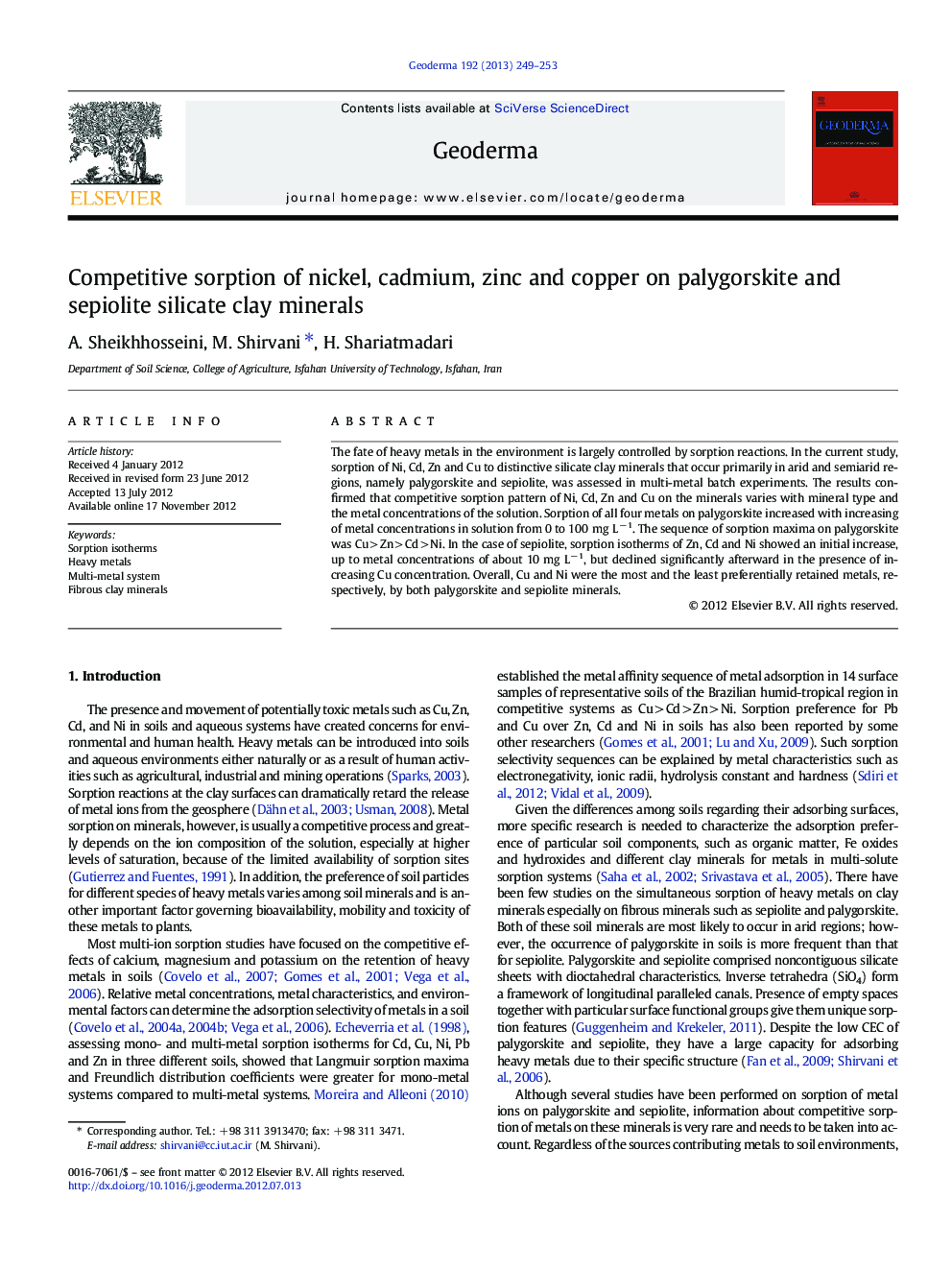| Article ID | Journal | Published Year | Pages | File Type |
|---|---|---|---|---|
| 4573772 | Geoderma | 2013 | 5 Pages |
The fate of heavy metals in the environment is largely controlled by sorption reactions. In the current study, sorption of Ni, Cd, Zn and Cu to distinctive silicate clay minerals that occur primarily in arid and semiarid regions, namely palygorskite and sepiolite, was assessed in multi-metal batch experiments. The results confirmed that competitive sorption pattern of Ni, Cd, Zn and Cu on the minerals varies with mineral type and the metal concentrations of the solution. Sorption of all four metals on palygorskite increased with increasing of metal concentrations in solution from 0 to 100 mg L− 1. The sequence of sorption maxima on palygorskite was Cu > Zn > Cd > Ni. In the case of sepiolite, sorption isotherms of Zn, Cd and Ni showed an initial increase, up to metal concentrations of about 10 mg L− 1, but declined significantly afterward in the presence of increasing Cu concentration. Overall, Cu and Ni were the most and the least preferentially retained metals, respectively, by both palygorskite and sepiolite minerals.
► Metal sorption from multi-metal systems on fibrous clays revealed different patterns ► The sequence of metal sorption maxima on palygorskite was as Cu > Zn > Cd > Ni ► For sepiolite, the sorption trend was Cu > Zn ≈ Cd > Ni ► Cu showed a much greater capacity to inhibit the sorption of the other metals
